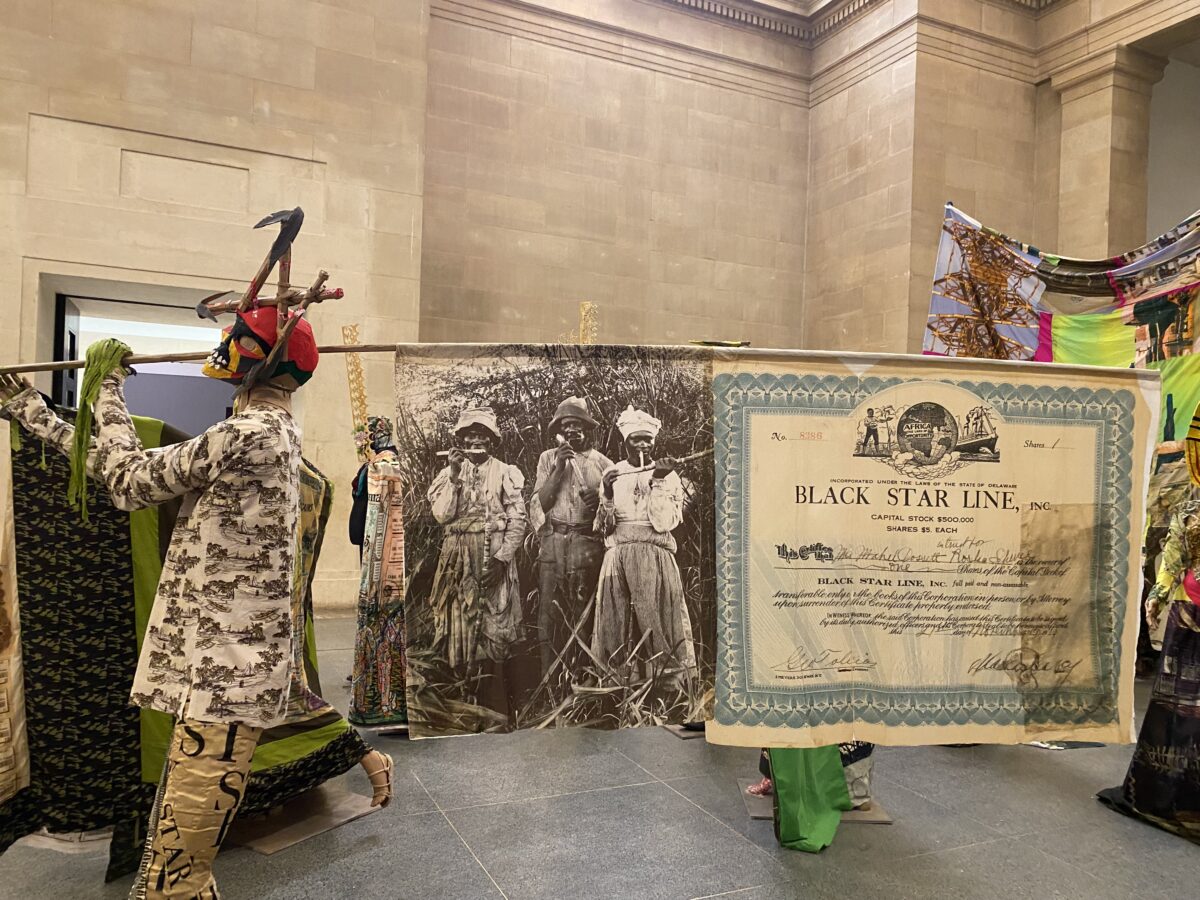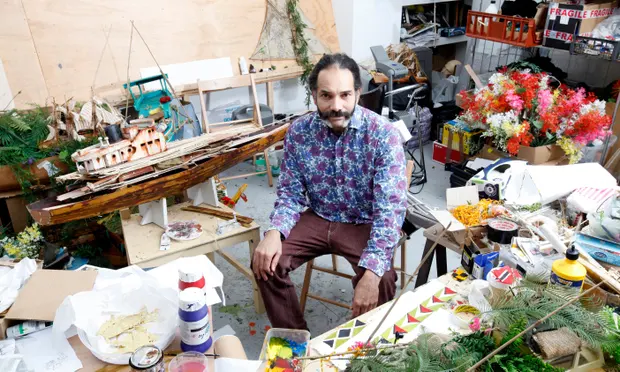When you go past the dome at the Millbank entrance of the Tate Britain art gallery and go into the huge ground-floor space, you are met with a torrent of people and colour. You are transported into a Caribbean carnival with hundreds of life-size and bigger figures. Included in their costumes are all the financial and contractual documentation of colonial exploitation and oppression. We see title deeds, share or bond certificates, as well as photos of colonial villas. Carnivals have historically also been places where challenges and opposition to power can be expressed. Here we see its traditional role subverted. The viewer feels both parts of the procession and yet in the shadow of its power since it is so imposing and the figures are sometimes quite large.

This week we have undergone the manufactured processional of mourning for Elizabeth Windsor. All those hundreds of journalists and queue correspondents failed to even raise the possibility that the viewing of the coffin could have been handled without such long queues with a straightforward online booking system. The state preferred to set up a sort of pilgrimage where the British people could show their devotion through suffering twelve or more hours of shuffling forward through the cold and drizzle. Hundreds of mourners, often elderly, had to receive medical attention. Luckily, nobody died during all of it…but then we would have had martyrs too. Many quite young children had to put up with it all.

This wonderful artwork gives us a different perspective. The Queue at Westminster reinforces all the symbolism of the monarchy with its strong military and colonial connections. If you look closely at the royal carriage, you can clearly see black people represented as beneath their colonial betters, receiving their dispossession for their own good. The Queen’s continuity with the Empire is unquestioned, even when they show her called to the throne from Kenya, where ferocious repression was meted out to those independence fighters who threatened her rule.
This wonderful artwork gives us a different perspective. The Queue at Westminster reinforces all the symbolism of the monarchy with its strong military and colonial connections.
Here we see black people who are proud and conscious of their oppression, marching together with strength and purpose. The whole spectacle is like a technicolour film with many extras that have been paused. We wondered whether some music might have made it even more dramatic, but perhaps that would have weakened the visual impact. For example, the famous statue of Churchill in Parliament Square is overlaid with the colours of the carnival on one of the figures. There is enough there to tell the story without sound.

Let us leave the artist to outline his own thoughts on the work published beside the work. We include a number of pictures we took.
A procession is part and parcel of the cycle of life; people gather and move together to celebrate, worship, protest, mourn, escape, or even better themselves. The Procession invites visitors to reflect on the cycles of history and the ebb and flow of cultures, people, and finance and power. Tate Britain’s founder was an art lover and sugar refining magnate, Henry Tate. In the installation, Locke says he ‘makes links with the historical after-effects of the sugar business, almost drawing out of the walls of the building,’ also revisiting his artistic journey so far, including, for example, work with statues, share certificates, cardboard, rising sea levels, carnival, and the military.
Throughout, visitors will see figures who travel through space and time. Here, they carry historical and cultural baggage, from the evidence of global financial and violent colonial control embellished on their clothes and banners, alongside powerful images of some of the disappearing colonial architecture of Locke’s childhood in Guyana.
The installation takes inspiration from real events and histories, but overall, the figures invite us to walk alongside them, into an enlarged vision of an imagined future.

What I try to do in my work is mix ideas of attraction and ideas of discomfort – colourful and attractive, but strangely, scarily surreal at the same time.
Art Book Review Books Campism Capitalism China Climate Emergency Conservative Government Conservative Party COVID-19 Creeping Fascism Economics EcoSocialism Elections Europe Far-Right Fascism Film Film Review Fourth International France Gaza History Imperialism Iran Israel Italy Keir Starmer Labour Party Long Read Marxism Marxist Theory Migrants Palestine pandemic Police Protest Russia Solidarity Statement Trade Unionism Trans*Mission Ukraine United States of America War

